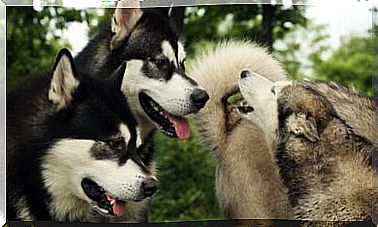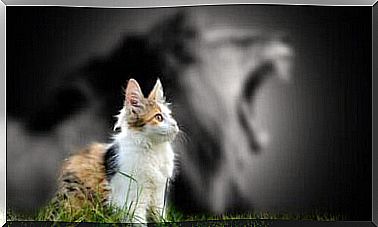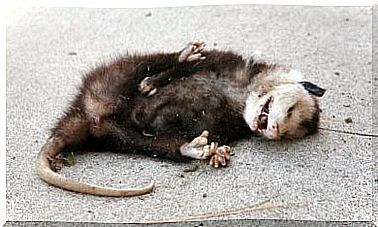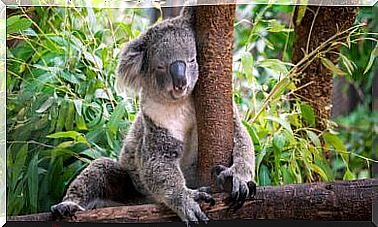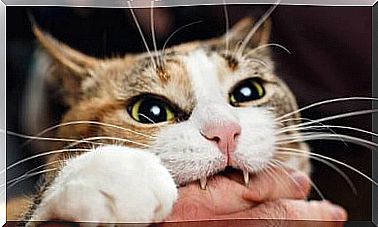5 Species Of Mustelids

Did you know that domestic ferrets are closely related to otters? To learn more about these and other mustelid species, don’t miss the list we share below.
What are the species of mustelids?
Mustelids are a family of small mammals. They are spread all over the planet, with the exception of the poles and Australia, and also throughout all ecosystems: there are those that live in dry environments, others are aquatic, some prefer the forest and others the prairies. They can even be domestic or wild.
There are several physical characteristics that all members of this family have in common: they are elongated animals, with short legs and short, soft fur. They have small, rounded ears. Also, they are all carnivores and therefore are great hunters.
These are some of the most popular species of mustelids:
1. Ferret
A few decades ago, the ferret became a pet thanks to its sociable nature and its great adaptability. Before that, ferrets were used in hunting, as they can glide past rabbit holes. In fact, even today there are many ferrets that are game animals.
Domestic ferrets can be found almost all over the planet, although they are more common in Europe and North America. They are medium in size and weigh between one and two pounds. They can be many different colors, although the most common are white and black and white.
2. Mink
Mink is one of the mustelid species that is much appreciated by the fur industry, as it has especially soft and pleasant fur . Although, on large farms, they are bred for the manufacture of coats, in the wild they run a serious risk of extinction.

There was a time when European mink could be found throughout continental Europe, from the Pyrenees to the Ural Mountains. However, hunting, the destruction of its habitat and the appearance of the American mink, thanks to escapes or releases from the fur farms, caused almost all of its population to disappear in recent decades.
The European mink is a little smaller than the ferret, as it is at most 43 centimeters long and weighs between half and a kilogram. It is brown and, in nature, lives close to water: rivers and lakes, mostly.
3. Otter
These mustelid species are divided into several subspecies distributed throughout almost the entire planet. The size depends on each subspecies, but among the otters are the biggest mustelids of all: the giant otter and the sea otter are much larger, weighing almost 30 and 40 kilos, respectively.
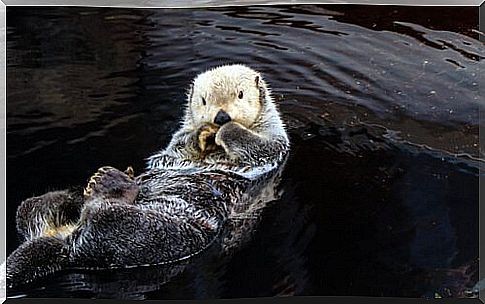
They are aquatic animals, much more skilled in water than on land. There are otters that live in rivers and others that prefer the sea: thanks to their waterproof coat, they manage to conserve heat. To swim, they take off with their hind legs and tail; the front legs are only used when swimming very slowly and on the surface.
4. Badger
The badger is a European mustelid that is distributed throughout most of the continent, from the Iberian Peninsula to the Ural Mountains, even entering Asia via the southern Black Sea. It is of robust build and generally weighs between 13 and 20 kilos.
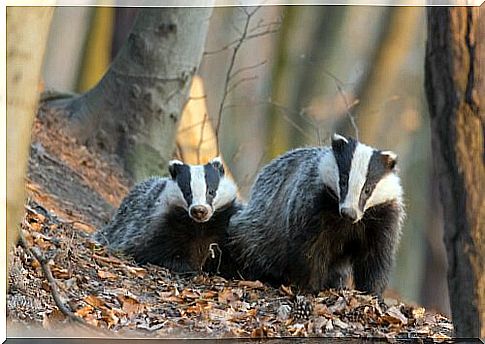
The most striking feature of this mustelid is its coat. The hair on the back is long and each hair has a curious color division: at the root and tip they are light, while the center is black. As a result, it has a speckled or grayish appearance. The head is white and has two black bands that go from the muzzle to the neck.
5. skunk
Cangambá is another well-known mustelid. Skunks live in North and South America; they are smaller than badgers, and almost no specimen weighs 10 kilos.

Like badgers, they are black and white; in this case, the body is black and has two white bands that start from the head and advance towards the tail.
Another of the best known characteristics of skunks is their smell: if they feel threatened, they can project a very unpleasant odorous liquid. This fluid is created in the anal glands, so before you spray it, it will raise the tail or hind legs as a warning sign.
Mustelids are a large family of small carnivorous mammals. They live in dry and aquatic environments and are spread over almost the entire planet : some are pets, but they are also wild animals that adapt their diet to their habitat.
